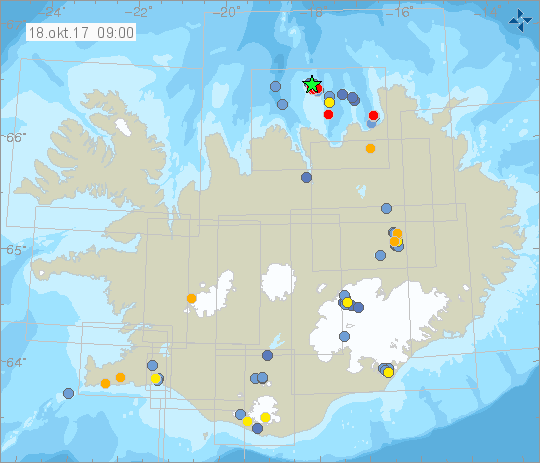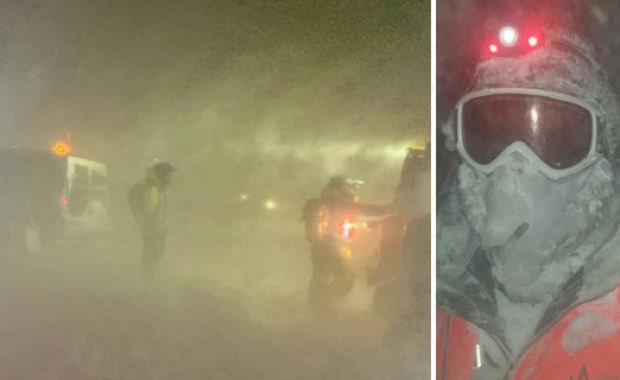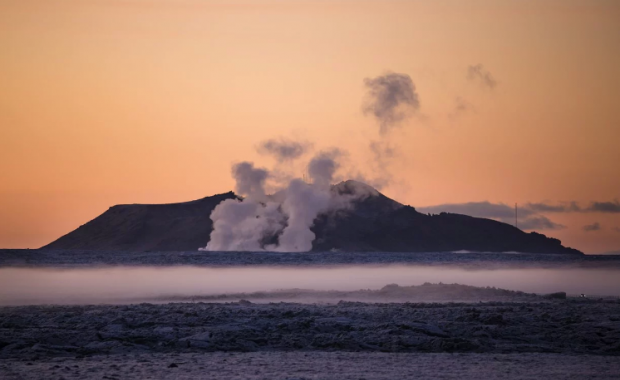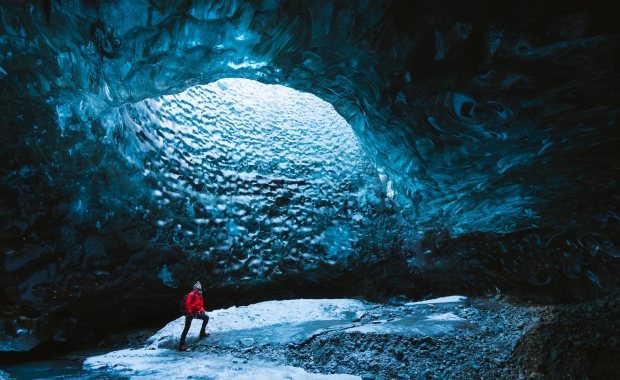The inhabitants of Grímsey island, Iceland's most remote settlement, have been kept awake since early morning by a sharp sharp earthquake swarm. The seismic monitoring system of the Icelandic Meteorological office shows that the most powerful quake in the swarm, which now counts more than 50 separate quakes, was a 3.3 magnitude quake at 6:00 this morning.
Read more: Four powerful earthquakes since yesterday: Iceland's most isolated village, Grímsey island, trembles
This is the second time this month that the small island is shaken by an earthquake swarm. A large swarm of more than 120 quakes, including four 3+ magnitude tremors, hit the island on Friday October 6.
An earthquake swarm shakes isolated island

The seismic activity has been all around the island, but the most powerful quakes have been concentrated to its north. The 3.6 magnitude quake at 6:00 this morning was 3.4 km (2.1 mi) to the north-northwest of the island.
Read more: Why the constant earthquakes? Iceland is slowly being torn apart
The epicenters of all the quakes have been at a significant depth of up to 10 km (6.2 mi). In Iceland earthquakes closer to the surface are more common in volcanic systems, caused by the movement of magma, while deeper quakes are more common in fracture zones, caused by the release of energy caused by the movement of the tectonic plates.
An area known for high seismic activity
The island of Grímsey lies on the Tjörnesbrotabelti, or Tjörnes rift zone. The area is part of the North Atlantic Ridge and is known for high geothermal activity and regular and significant seismic activity, caused by energy being released as the tectonic plates drift in opposite directions from one another.
Grímsey itself is a small island with a surface area of the island is just 5.3 km2 (2 sq miles). It is the northernmost settlement in Iceland, located 40 km (25 miles) off the north coast of Iceland, and one of the northernmost parts of Iceland, straddling the Arctic Circle. The island, which has a population of some 90 people, is connected to the mainland by a ferry and air. Grímsey also has large colonies of sea birds, including Puffins.

The inhabitants of Grímsey island, Iceland's most remote settlement, have been kept awake since early morning by a sharp sharp earthquake swarm. The seismic monitoring system of the Icelandic Meteorological office shows that the most powerful quake in the swarm, which now counts more than 50 separate quakes, was a 3.3 magnitude quake at 6:00 this morning.
Read more: Four powerful earthquakes since yesterday: Iceland's most isolated village, Grímsey island, trembles
This is the second time this month that the small island is shaken by an earthquake swarm. A large swarm of more than 120 quakes, including four 3+ magnitude tremors, hit the island on Friday October 6.
An earthquake swarm shakes isolated island

The seismic activity has been all around the island, but the most powerful quakes have been concentrated to its north. The 3.6 magnitude quake at 6:00 this morning was 3.4 km (2.1 mi) to the north-northwest of the island.
Read more: Why the constant earthquakes? Iceland is slowly being torn apart
The epicenters of all the quakes have been at a significant depth of up to 10 km (6.2 mi). In Iceland earthquakes closer to the surface are more common in volcanic systems, caused by the movement of magma, while deeper quakes are more common in fracture zones, caused by the release of energy caused by the movement of the tectonic plates.
An area known for high seismic activity
The island of Grímsey lies on the Tjörnesbrotabelti, or Tjörnes rift zone. The area is part of the North Atlantic Ridge and is known for high geothermal activity and regular and significant seismic activity, caused by energy being released as the tectonic plates drift in opposite directions from one another.
Grímsey itself is a small island with a surface area of the island is just 5.3 km2 (2 sq miles). It is the northernmost settlement in Iceland, located 40 km (25 miles) off the north coast of Iceland, and one of the northernmost parts of Iceland, straddling the Arctic Circle. The island, which has a population of some 90 people, is connected to the mainland by a ferry and air. Grímsey also has large colonies of sea birds, including Puffins.







